The Importance of Empathy
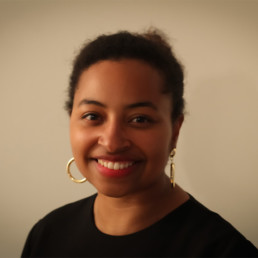
Written by Rebecca Ferdinand
Marketing manager at Lyfta. She has a BSc in Psychology from Durham and has worked for a range of organisations including the Centre for Literacy in Primary Education.
Empathy is one of the fundamental values underpinning our work at Lyfta. In this blog we discuss the scientific evidence for empathy, and talk about how we can nurture it in ourselves and in the children we teach.
This blog first appeared on Lyfta.com. Lyfta is a partner organisation and supporter of DiverseEd.
At a time of continued global disruption and isolation, the importance of being able to have empathetic connections with others – to feel with them and care about their wellbeing – will be critical to ensuring that we build workplaces and societies that can thrive into the future. The children of today all have the potential to build a more peaceful and sustainable world, and empowering them with a strong sense of empathy will enable them to navigate this challenge with sensitivity and compassion.
“Empathy is a quality of character that can change the world.” Barack Obama
But what is empathy? Some confuse empathy (feeling with someone) with sympathy (feeling sorry for someone), but Dr Brené Brown does a good job of explaining this and highlighting Dr Theresa Wiseman’s four attributes of empathy: the ability to perceive others’ feelings, to not stand in judgement of those feelings, recognising or imagining the other person’s emotions, and communicating this effectively. When we connect empathetically, we have better relationships, we become better co-workers and managers, but more importantly, we become more compassionate people – and compassion is vital to a sustainable and humane future.
“Empathy has no script. There is no right way or wrong way to do it. It’s simply listening, holding space, withholding judgment, emotionally connecting, and communicating that incredibly healing message of ‘You’re not alone’.” Dr Brené Brown
Over the past two decades, the evidence that human beings are wired for empathy and social cooperation has grown considerably. Neuroscientists have identified areas of the brain that, if damaged or compromised, can affect our ability to identify and understand others’ feelings. Psychologists have shown that children as young as 18 months are capable of attributing mental states to other people. But empathy is not a fixed ability. Evidence suggests that we can continue to develop our capacity for understanding others throughout our lives, but busy lifestyles and our tendency to surround ourselves with people who look and think like us, mean that we are not often encouraged to take a moment to connect with others. So how can we actively become more understanding, and nurture this ability in the children we teach? Here are four ways we can develop empathy in ourselves and in others:
- Be curious. We increase our capacity for empathy when we interact with people outside of our usual social circle, and encounter lives and world-views very different from our own. You could actively seek out new perspectives by seeking out people on social media who you wouldn’t usually follow, or, if you’re brave enough, making the effort to start up meaningful conversations with any new people you encounter day-to-day.
Research has shown that reading fiction helps people to improve their ability to understand others. Try to seek out stories from as wide a range of perspectives as possible for both yourself and the children you teach. Of course, Lyfta can help you bring real human stories from around the world into your classroom.
- Challenge your prejudices. We all make assumptions about people, and often these are completely unconscious. These might be based around gender, age or racial stereotypes that prevent us from appreciating each person’s individuality. Our biases can seriously hinder our ability to become more empathetic, but acknowledging and challenging them is the first step toward becoming a more understanding person. You can learn more about your biases by taking an unconscious bias test, and tackle them by attending diversity, equity and inclusion workshops or discussions such as those run by the #DiverseEd community.
In the classroom, you could open up discussions on the nature of stereotyping and prejudice, and ensure that you expose your students to people, places and stories that defy widely held expectations. Lyfta gives you access to real immersive human stories from around the world, helping you to start conversations that might otherwise be difficult to initiate during lessons.
- Listen (and be vulnerable). Being an empathetic conversationalist means listening actively. Try to be completely present to the feelings that a person is communicating in their conversation with you. Whether it’s a quick chat with a colleague, or a catch-up with an old friend, do all you can to understand their emotional state and needs. You can model active listening with the children you teach by making sure you give them your full attention during one-on-one conversations, and by reflecting and repeating back what you think they may be feeling to make sure you fully understand.
It isn’t enough to just listen, however. Being vulnerable and revealing our honest thoughts and feelings to others is vital to the creation of strong empathic relationships with both adults and children.
- Take action. Volunteering can be a great way to experience other lives first hand, create real change, and model empathy to students you teach. You can also encourage your students to join (or set up) clubs at school, such as environmental or equalities clubs, or to take action in response to local issues such as going on a litter pick, or organising donations to a food bank in your area.
“Empathy has always been important. Through empathy we understand and support others; it helps us build trusted relationships and our own peace of mind. Building on the strong foundations developed by its founders, Lyfta, and the approach that it nurtures, helps teachers and students raise their awareness of what is going on around us, of other people’s lives and of the wider world. Such awareness is probably more important now than ever before – at school, at work, and in life. I am glad to have experienced and grateful for Lyfta’s contribution to raising awareness, thinking of others, and developing skills appropriate to learning development; to strengthening of empathy; and to building the capability of all students.” Gavin Dykes, Director of the Education World Forum
Nurturing empathy is one of Lyfta’s fundamental aims. We believe that empathy is the first, and possibly most important, step to building a more compassionate, sustainable and equitable world. Our real immersive human stories provide a powerful way to foster empathetic understanding by giving students access to a wide and diverse range of global perspectives, challenging their misconceptions, and motivating action.
Join a free webinar to find out more about using Lyfta’s impactful stories in the classroom, and access a free trial of the platform.
Improving Support for LGBT+ Young People in Schools and Colleges
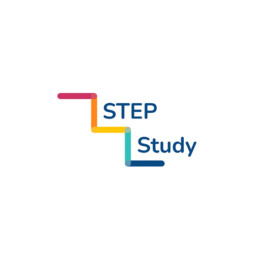
Written by STEP Study
The Schools Training to Enhance support for LGBT+ young People (STEP) study, funded by the TRIUMPH network, is being co-led by a research team at the ESRC Centre for Society and Mental Health, young people, and the Mosaic LGBT+ Young Persons Trust.
For many LGBT+ young people, school can be a place of growth—a “home away from home”—or an environment just as bad as the alternatives.
Bullying and peer victimisation experiences such as violence, anti-LGBT+ language, exclusion, and pressures to conform are all more common for LGBT+ students. These experiences adversely affect mental health and well-being, such as a sense of belonging, feelings of physical and psychological safety, and access to support. These things contribute to higher levels of problems such as depression, poor body image, self-harm, substance misuse as well as suicidal thoughts and behaviours among young people who identify as LGBT+.
Teachers and other staff who create more accepting environments can break this cycle. To support LGBT+ students, it is important that they understand LGBT+ issues and how being LGBT+ might affect students; and stand up for them and actively challenge bullying and discrimination, to create more accepting environments and help prevent mental health issues.
The Schools Training to Enhance support for LGBT+ young People (STEP) study, funded by the TRIUMPH network, is being co-led by a research team at the ESRC Centre for Society and Mental Health, young people, and the Mosaic LGBT+ Young Persons Trust. We are working together to:
- Identify what training is already available to school/college staff
- Understand what makes it easier or more difficult for schools to access training, and to find ways to support uptake for different schools/colleges.
- Improve training for secondary schools/colleges to better support LGBT+ pupils, focusing on what young people and staff think is important for school/college staff to know.
We want to ensure that our work is intersectional. We are learning more about how schools and colleges can better support the well-being of all young LGBT+ people. This includes minoritised racial and ethnic groups and faith communities, young people from low-income families, as well as young people living in rural and coastal areas.
So far, we have conducted interviews and focus groups with training providers in the UK to learn more about what their training covers, how it’s developed and links to student mental health. Through these conversations, we have started to identify barriers that schools face in taking up and implementing training to support LGBTQ+ students.
Next, young researchers will lead group discussions with pupils (aged 13-19 years) and school staff to identify what they think is important for school staff to know.
We will then hold two creative workshops, both co-led by young researchers and including:
- Students aged 13-19 years: to identify and design potential improvements to existing training.
- School/college staff and people who run teacher training courses: to design ways to increase training uptake by schools.
We will use our findings to recommend changes to schools training, and to plan a larger research project to test out these improvements in terms of their impact on young people’s mental health.
Get involved in the STEP study
We are currently recruiting i) young people (aged 13-19), ii) school staff and iii) providers of training to schools on LGBT+ issues to take part in an interview or focus group, and/or a creative workshop co-led by young researchers. Please get in touch if you would like to get involved and feel free to share with anyone who may be interested.
We would particularly like to hear from you if any of the following apply:
- You identify as LGBT+
- You identify as Black African, Black Caribbean, Asian, Latin American, Middle Eastern, from a mixed or any other racial or ethnic background
- You are a person of faith
- You live in a rural or coastal area
Why is the STEP study important to young people?
Juliet, student and young adult researcher in the STEP study coproduction team
“I think this project is really important to young LGBTQ+ people, because when we get together as a community, we see that there are huge school to school and regional differences, in how topics like relationships and sex education are addressed. And that this also influences young people’s obviously mental health and coming out journeys, or many of them struggling with their sexuality. A good school versus a bad school, can mean the difference between getting into a good university versus, and having a good job, versus not being very successful in life.”
Further information
To get involved in the project or for more information visit: http://www.stepstudy.co.uk/
You can also e-mail: steps@kcl.ac.uk
Follow us on Twitter: https://twitter.com/TheStepStudy or Instagram: https://www.instagram.com/thestepstudy/
Engaging and Empowering Students in DEI Work

Written by Lois Nethersell-Webb
Lois is a History teacher and DEI Lead at a rural Norfolk High School. In this role she is leading whole school training on diversifying the curriculum. Lois is also a founder of the Norfolk DEI Network and is passionate about encouraging and guiding young people to become change makers.
What kind of adults do we want our students to become? Do we want them to passively accept the status quo or do we want them to become active citizens who question the world around them? If the latter, then we must model and shape this behaviour in schools by providing them with opportunities to express their views and lead on causes that ignite their passions.
Students need to see that becoming involved in DEI work within schools or, indeed, wider society, is a sign of strength. When the government views standing up for marginalised groups as ‘woke’ we are fighting a populist narrative. Educators need to demonstrate to students that standing up to a friend who uses racist or homophobic slurs is not woke, it is strength. Educators need to demonstrate to students that calling out your mate who has made sexualised comments to a female student is not woke, it is strength. Educators need to demonstrate to students that refusing to mimic the accent of a new teacher is not woke, it is strength.
One way that schools can demonstrate active citizenship to the pupils in their charge is through setting up intersectional diversity groups. Whilst student groups focused on one particular protected characteristic, such as Pride Club, have their place, an intersectional group enables students with different protected characteristics, and their allies, to come together and support each other. We must create safe spaces for students to discuss concerns and lived experiences before supporting them to curate ways in which to spread their narratives across the whole student body.
Our student Diversity, Inclusion, Campaigns and Equality (DICE) group have been instrumental in raising awareness of a number of societal issues. Whether it be a cube of truth focused on male mental health or the lunchtime climate change protest, our students have thought of innovative and engaging ways to enlighten the wider student body and get them thinking about how change can happen. Showing students how to use their voice for good and how to channel their views is an essential part of their education.
All too often running student groups, like DICE, is left to chance. If there is a member of staff with a protected characteristic or who has a particular passion for DEI work then the student groups are formed. This should not be the case. LGBTQ+ teachers are tired of being the ones to start the Pride Clubs in schools. Black teachers are tired of being the ones who support students who have experienced racism. We need our allies. We need other educators, particularly white, able bodied, cisgendered male educators, to stand with us and help set up student groups. The power you hold is immeasurable. Help us set up our student groups and demonstrate that DEI work is the work of all.
To create a truly diverse, equitable and inclusive society all adults, no matter their lived experiences, must see tackling injustice and inequality as their responsibility. For this to happen we must start by showing students that DEI work is a collective responsibility. If you want to help your students become young changemakers – set up an intersectional student DEI group; neither you nor your students will regret it.
Global Learning, Digital Global Citizenship and the SDGs – 8 Learning Opportunities for SEND Settings
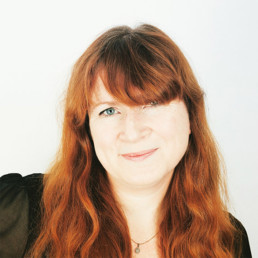
Written by Dr Harriet Marshall
Head of Educational Research at Lyfta and has been a global education advocate for over 20 years, as a teacher, researcher, consultant and education project leader.
The challenge of bringing the outside world into an indoor learning space has had a lot of attention recently as a result of ‘lockdown-learning’ requirements. However, many in the field of global learning have been actively working on this pedagogical task for decades in a variety of ways. Recently, practice has been ramped up a gear, thanks to youth mobilisation to stop climate change, David Attenborough’s chart-busting ‘Our Planet’, the UN’s 17 Sustainable Development Goals (SDGs), and a new range of digital global citizenship education opportunities.
Global citizenship education, sustainable development education or human rights education can be an empowering, enriching, and transformative educational experience. The extent to which UN states also believe this work crucial is manifested in Target 4.7 of the SDGs:
By 2030 ensure all learners acquire knowledge and skills needed to promote sustainable development, including among others through education for sustainable development and sustainable lifestyles, human rights, gender equality, promotion of a culture of peace and non-violence, global citizenship, and appreciation of cultural diversity and of culture’s contribution to sustainable development. (Source: sdgs.un.org)
The 2030 Agenda for Sustainable Development, the resolution adopting the SDGs, pledged to ‘leave no one behind’ and recognises the dignity of all and equality among all. The plan therefore rightly highlights an opportunity to consider complex global issues relating to equality, diversity and inclusion in all sorts of settings – including schools.
There are many ways in which schools are opting to bring in global learning – from school awards (such as UNICEF’s Rights Respecting Schools) to working with regional Development Education Centres to engaging in programmes like the British Council’s Connecting Classrooms. Some teachers are familiar with publications such as Oxfam’s Guides for Teachers on the ‘Sustainable Development Goals’ or ‘Global Citizenship Education’ and so use these to identify a curricular and pedagogic strategy right for the needs of their students. Research hubs such as the Development Education Research Centre (UCL London) have also now established global learning as a credible educational field by researching practice around the world and producing peer-reviewed publications such as the International Journal of Development Education and Global Learning. However, we do not yet know enough about effective global learning practice in SEND settings – but we do know that some exciting and transformative practice is taking place.
An increasingly popular methodology for supporting global learning and empathy-building combines both an ancient pedagogic technique with a modern-day one – storytelling and film making. We believe in capturing human stories through powerful short films which can then be turned into 360-degree interactive spaces for learning. Through this, students and teachers can navigate a virtual globe, explore different countries and visit various storyworlds. The films offer a unique glimpse into someone’s life and/or home and a snippet of how they see their lives and the world at a particular moment in time. No story provides a complete picture of an issue, but it helps bring things to life for students by using real-world examples and themes. Aligning this with lesson plans and resources mapped to the UN’s Sustainable Development Goals will also help build cultural awareness and global citizenship amongst students.
Let’s take a look at some of the ways in which global learning can positively impact students with special educational needs (SEN) and/or disabilities by drawing upon schools already doing this through various global learning methodologies:
- Enhancing independent learning and confidence building: Most case studies and reports emphasise how digital global learning resources can enhance independent learning and build confidence – something educators working with students with SEN have especially noticed and appreciated. One teacher from Elms Bank school has been using Lyfta’s global learning immersive digital stories with her class of students with autism. Although at first sceptical about how students might respond to the international storyworlds and subtitles, she noticed the extent to which the children engaged and empathised with the people featured in the stories and how it opened up opportunities for them. The teacher explained, “it brings the outside world into the classroom without having to go anywhere… it immerses them and engages them in a world which isn’t open to them, which they would find so difficult to be able to go and travel to places and talk to people…it allows them to do that without having to leave a space… without the pressures of unknown and the pressures of communication which might happen, they can become more independent”. Another example relates to how teachers and students are often similarly unaware of the details of global learning issues and this more level knowledge playing field can be empowering for students – offering them an opportunity to lead on topic direction or independent exploration on a range of levels.
- Supporting blended, remote and flexible learning: Global learning through immersive platforms can support a blended learning approach in a variety of settings. Digital resources that offer flexibility and choice about delivery methodology support SEN teachers in their unique settings. From a group of physically disabled students in Finland who have enjoyed the post-viewing discussions after watching real-world videos covering specific scenarios and themes to a UK teacher in an alternative provision setting who found students actually participated thanks to the option of collectively inputting ‘student’ responses to global learning questions (thus navigating obstacles to participation such as the shame felt by ‘poor spelling’).
- A useful opportunity to map, connect and combine different global learning approaches and pre-existing activities: Combining a whole school award with deeper-dive resources can provide the collective overview and the bespoke teaching methodologies required for SEN settings. For example, one teacher from the Venturer’s Academy said “I work with students who require a lot of sensory input to their learning so I’m using Lyfta to support them by creating an immersive learning experience. We are a Rights Respecting School and the platform works alongside this perfectly, enabling me to fully embed the Rights and SDGs across the school.” Other teachers have talked about how the practice of reflecting upon where global learning is already taking place in the school (such as gardening projects for sustainable and healthy lifestyles or international school-linking initiatives) can be helpful in many ways.
- Increasing engagement with physical activity (and other subjects): The UN’s SDGs combined with an immersive digital global learning resources can support PE teaching with children with SEN. For example, alongside the Youth Sport Trust and Lead Inclusion Schools across the country, we created a guide that uniquely connects PE, school sport and health and wellbeing together through immersive storyworlds aligned with the UN’s SDGs. The aim was to provide practitioners with the opportunity to engage young people in their schools that may not have previously accessed school sport, and develop confidence to access new opportunities, with the long-term outcome of increasing take up in physical activity.
- Global learning resources offering a non-sequential (and non-hierarchical) ordering of themes can fit in well with student interests and curriculum topics and priorities. Global learning is a lot about values and attitudes, but it is also about real world knowledge which has been reported as being perceived to be both relevant and interesting by students. Teachers in SEN settings have also talked about how immersive technology and storytelling can be used within a range of subjects, providing links and continuity to support student understanding.
- Global learning and digital global citizenship resources can be a way of teaching across different age-groups. Linked to point 5, opportunities for vertical teaching strategies are often useful when working with mixed-aged groups of students with different needs. The consistency of common themes can also assist in transition work.
- Building intercultural understanding and meeting those from other countries without traveling: One teacher at Rivermead School (post-16 Partnership) said how much she had enjoyed seeing her students engage with resources: “I work with students with SEN and we are a very small provision (seven students) but I have loved seeing their reactions and behaviour during our sessions where we discover new worlds. They are very respectful of other cultures and it is lovely to hear them discuss these later on that week or even a few weeks later.” Another teacher who worked with students with autism said that it was a unique opportunity for students to feel part of the world and meet people from other cultures or countries when they are highly unlikely to in their non-digital lives in the near future.
- A useful pedagogic technique for bringing in PSHE, relationships, challenging stereotypes, life-skills and self-care themes. Storytelling can help reinforce life-skills around subjects such as hygiene and health by addressing these themes but in a different context. The same can be applied to introducing more sensitive topics such as stereotyping and difference.
Prior to 2020, we could not have predicted the vital role remote learning would play in delivering the curriculum and enhancing human connection at a time of physical disconnection. While most evidence here is anecdotal and there is a need for more rigorous research on the extent to which global learning can facilitate a greater understanding of other communities and cultures, there are several educators working with children with SEN who have discovered many reasons to be optimistic. In fact, some settings may even be able to lead the way in developing innovative and useful methods, strategies and pedagogies when working with digital global learning resources.
If you would like to hear more about Lyfta or access free teacher training and trial access, sign up here.
#DiverseEd’s Top 10 Videos of 2020-21

Written by DiverseEd
Diverse Educators started as a grassroots network in 2018 to create a space for a coherent and cohesive conversation about DEI. We have evolved into a training provider and event organiser for all things DEI.
We love to amplify the voices, share the journeys, and celebrate the stories of our community. Our events are inclusive and representative. Our speakers provoke reflection and stimulate discussion by:
- sharing their lived experience;
- reflecting on their classroom practice and curriculum design;
- evaluating the impact of policy changes;
- disseminating strategies for diversifying recruitment and governance.
Last year we hosted:
- 4 virtual conferences
- a #DiverseGovernance series
- a #FastForwardDiversityInclusion series
- Bennie’s book launch
- World Book Day
- A Conversation With…
You can meet our speakers here you can review our events archive here.
Deepening our thinking around DEI starts with who and what we listen to, helping us to develop our confidence and our competence, both individually and collectively. Listening to our community provokes learning through reflection and conversation to help us all understand the breadth and the depth of DEI issues we need to develop an awareness of.
Themes explored in the 2020-21 video collection include: allyship, belonging, coaching, community, culture, curriculum, governance, identity, leadership, mentoring, policy, recruitment, representation, role models, student voice, teaching and wellbeing.
Here are our Top 10 Most-Viewed #DiverseEd Videos in the 2020-21 academic year:
- #DiverseEd Live 2 – Oct ‘20
- #DiverseEd Live 1 – June ‘20
- #DiverseEdGovernance – 14th Jan ‘21
- #DiverseEd Live 3 – Jan ‘21
- #DiverseEdGovernance – 19th Nov ‘20
- Bennie’s Book Launch – 14th Nov ‘20
- #DiverseEdGovernance – 3rd Dec ‘20
- #FastForwardDiversityInclusion Episode 3 – 19th July ‘20
- #DiverseEd Live 4 – April ‘21
- #DiverseEd Live 1: Session 2 (Curriculum) – June ‘20
Thank you to everyone who has spoken at one of #DiverseEd virtual events to date – we appreciate you sharing you experience and expertise with our audience.
Our calendar for 2021-22 is updated regularly here. Please do get in touch if you would like to speak at one of our future events or indeed host us! You can complete our google form for speakers for 2021-22 events here.
As a Woman, I Would Be the Perfect Husband
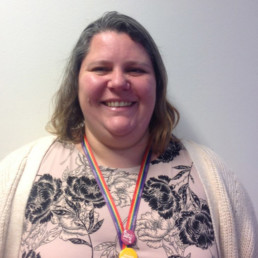
Written by Ninna Makrinov
Organisational Psychologist with over 20 years' experience in Higher Education. Currently the Chair of Governors at Water Mill Primary School.
People sometimes laugh when I say I would be a great husband. I think those who understand the patriarchy in the West might get it though.
This weekend I had a lot of fun washing my car and doing DIY, while my house is a mess. The last three things I bought for myself that gave me joy were a nail gun, a battery-operated drill, and a pressure washer. I love work, I might even be a bit of a workaholic. In my spare time, I volunteer as chair of governors in my local school. I spend the rest of my time gardening, reading and watching TV. I also like sewing and cooking. I am a solo mum with two children, is it a surprise that I just mention them at the end of the paragraph?
It has taken me 40 years and quite a lot of pain to understand that all I described above is fine. That I can be my true self. That I can be loved even if I am a terrible housewife. That it is OK to love my children and say openly that they are not the centre of my life. Are there others who feel the same way? I also often wonder if some men feel trapped too, if they crave to be the main carers and not the main providers in a family. If I can be the perfect husband, they can be the perfect wife. I have noticed too that I have focused on the binary, I understand and respect that gender is a continuum. So I suppose my question is more how we all respond to gender stereotypes. I also realise that I am writing of the ‘traditional’ family, maybe because I crave companionship and community living is not something I know much about or is common enough in the UK. I am also writing as a white, Chilean, cis, heterosexual woman. Please open my eyes to other ways to live!
What does it mean to be a woman?
I am not sure we really know. I recently joined a feminist reading group (I know, late to the party) and it has been great to discover feminism in more depth. It has made me wonder why I define myself as a woman. My preferred pronouns are she and her. I suppose I was naturally a child who liked to please and tried to fit in. It was hard though!
At some point early in life, I might have been 8, I realised life would be easier for me if I was a boy. Most of my friends were boys, I thought girls were silly. I liked Lego, He-Man and Star Wars; I was given Barbies and dolls. I also liked the Care Bears, I must admit. I loved being part of the boys’ world. Why was it a boys’ world though?
A little later, I had to discard some of my ‘dream jobs’. I wanted to be a fighter pilot like my dad but in Chile (where I was born and raised) women were not allowed to join the airforce. Women police officers had to wear high heels, madness! I love that some women were less accommodating, so there are now women fighter pilots in Chile too. In my teenage rebellion I became a Catholic and I would have loved to be a priest; again, not a job for women. I am not going to get into a discussion about religion.
I also remember a time when one of my best friends told me that if I wanted to have a boyfriend I needed to act as if I was less intelligent than they were. I am glad that in that case I realised how stupid that idea was. Maybe that is why I did not have my first boyfriend until I was 17.
I don’t believe being a woman means focusing on being pretty, quiet and subservient. I am a woman. I am a loud leader and I love being the centre of attention. We have moved on in what it means to be a woman. Have we moved on what it means to be a wife though?
Being a wife and a mother
Attitudes are changing, at least in the UK. According to the British Social Attitudes Survey, in 2017 almost three quarters of people disagreed that a man’s job is to earn money and a woman’s job is to look after the home and family. However, In 2018 most people agreed that the mother should take either the entire or most of the paid maternity leave period (52%), while 34% thought it should be split equally and none thought the dad should take most; 13% could not choose. In 2017, most people (51%) also thought that it was best for the mother to stay at home or work part-time and the father to work full-time while children were under school age; none thought I was best for this to be reversed. Interestingly, when only asked about the mother, 33% thought they should stay at home, 38% that they should work part-time and 7% full-time. For mothers of school-age children, 2% thought they should stay at home, 49% prefer for women to work part-time and 27% to work full-time (percentages don’t add up to 100% as some people responded they could not choose). I could go on for ages. Read the excellent Section on Gender Inequality and Family Change section of the Understanding Society Insights 2018-19 for many other details. It clearly states that “there are gender inequalities throughout the life course”, these increase when becoming a parent.
I found the analysis on how our attitudes change when becoming parents very interesting. The report suggests that women change their gender role attitudes when becoming mothers, and it is likely that most progressive women change their attitudes more. The authors suggested this could be due to cognitive dissonance, as women adjust to new roles due to lack of alternatives. I can see this in my experience too. When I became a mother, my role changed from full-time worker to worker and mother; my responsibilities increased. I hated it; particularly when people criticized me for having a messy house while praising my ex-husband for being such a good dad when he changed a nappy. He was a good dad, but that was his role and no-one told me I was a good mum for changing nappies. No-one criticised him for our messy house either, they just wondered what I had been doing all day (I had been working from home).
Living the dream: ‘being a husband’
I had the experience of turning this around when I first became a single mum. Not really in the full sense of being married to someone who did the work. But for a while I was the provider for my family and, because I was living in Mexico, I could afford to pay my sister-in-law to be my ‘wife’ (nanny, cleaner, cook) – to be clear the analogy ends there. The arrangement worked for both of us, her daughters and my sons. It was so lovely to come home from work to a clean house and dinner on the table. I understand why the status quo is kept. Women have ‘earned’ the right to work, we have not earned the right to stop ‘being the wife’. If married, most women take on more caring responsibilities, particularly when becoming mothers. If going solo, we tend to keep children for a bigger percentage of time. I know this is not the case for all, I also know some men would prefer this not to be the case. My point is just, can we just do what we do best, forgetting ‘traditional roles’?
#DiverseEd’s Top 10 Blogs of 2020-21

Written by DiverseEd
Diverse Educators started as a grassroots network in 2018 to create a space for a coherent and cohesive conversation about DEI. We have evolved into a training provider and event organiser for all things DEI.
We love to amplify the voices, share the journeys, and celebrate the stories of our community. Our blogs vary from sharing lived experience, to reflecting on classroom practice and curriculum design, to evaluating the impact of policy changes. We published 150 blogs from our network last academic year. You can meet our bloggers here and you can review our collection here.
Deepening our thinking around DEI starts with who and what we are reading, helping us to develop our confidence and our competence, both individually and collectively. Reading the blogs by our community provokes reflection and stimulates conversations to help us all understand the breadth and the depth of issues we need to develop an awareness of.
Themes explored in the 2020-21 blog collection include: allyship, belonging, careers, coaching, commitment, community, curriculum, culture, governance, HR, identity, ITTE, language, leadership, policy, recruitment, reflection, representation, research, safeguarding, strategy, teaching, wellbeing.
Here are our Top 10 Most-Read #DiverseEd Blogs in the 2020-21 academic year:
- How do we deal with racism in the classroom – Hannah Wilson
- How to promote an anti-racist culture in social work – Wayne Reid
- Interactive diversity calendar 2021 – Carly Hind/ Dual Frequency
- How does material deprivation intersect with ethnicity to understand the variations in the achievement among BAME students – Nicole Edwards
- Don’t tuck in your labels – Bennie Kara
- Dear Secretary of State – Hannah Wilson
- Gender is wibbly wobbly and timey wimey and gloriously so – Matthew Savage
- Engaging with diversity – giving pupils a voice – Gaurav Dubay
- Black lives matter, then now always – Wayne Reid
- Breaking the cycle anti-racist plan term 1 – Dwain Brandy
Thank you to everyone who has contributed to our #DiverseEd date and please do get in touch if you would like us to publish you. You can find out more about how to submit here.
Broaden Horizons with Technology

Written by Serdar Ferit
Filmmaker, digital experience designer, and teacher who has won numerous awards and worked in over 20 countries on film, new media and education projects. Co-CEO of Lyfta.
This article first featured in the July edition of Headteacher Update Magazine.
While great strides have been made with LGBTQ+ equality in recent years, there is still so much more to be done to improve how these topics are discussed in school. Teaching children about sex education, human relationships and gender identity is vital to creating more accepting and well rounded global citizens. Education plays a fundamental role here and this is an area about which many teachers are passionate.
As of September 2020, it is mandatory for all English schools to teach an LGBTQ-inclusive curriculum. Educating children from an early age about diversity and equipping them with the skills to better understand and celebrate this is one of the most important things we can teach in schools. It is the key to eradicating discrimination in society and fostering a future generation who are more empathetic and inclusive towards one another.
Teaching pupils, particularly younger children, about Pride and what it means to be LGBTQ+ is sometimes perceived as a thorny subject. Sex education should be treated with sensitivity in schools, to ensure that children feel safe if they wish to open up and express themselves. It’s vital to equip teachers with the resources and skills that will help them confidently teach diversity in the curriculum and usualise it as a subject for children. Sharing real-life stories from people who come from different backgrounds can be a powerful way for schools to approach this. Hearing people share stories of their own lived experience, helps to nurture empathy and understanding and can make sensitive themes such as inclusivity and sexuality easier to understand.
When these real-life, story-based lessons are presented in an immersive way, the impact is even greater, offering an incredibly powerful and engaging way to introduce children to different themes and allowing them to explore new cultures and perspectives which they otherwise might not experience. This is especially powerful when teaching an inclusive curriculum. Some pupils might have never met someone who is openly LGBTQ+, or they might have even witnessed, or been subjected to, negative stereotyping and homophobia. Sharing human stories with pupils through an interactive, 360° learning environment gives them the freedom to explore and hear first-hand from people whose lived experiences can help broaden understanding and foster inclusivity.
Immersive storytelling platforms like Lyfta allow schools to take pupils on virtual trips, for example to Curacao in the Caribbean, where they can hear from Qwensley, a young gay man living in a conservative Christian community. Children explore what it means to Qwensley to be part of the LGBTQ+ community and the challenges he faced, whilst discovering the power of resilience, empathy and acceptance. Introducing children to multiple perspectives, and demonstrating diversity will not only help to broaden pupils’ horizons and sense of cultural capital, but will also equip them with the knowledge and confidence to express their own identities and be proud of who they are. Human storytelling enables teachers to bring depth, breadth and meaning to sensitive and complex concepts for children and can create a safe space for the class to discuss and engage with the themes.
With the coronavirus pandemic limiting travel and close human interactions, speaking to children about diversity around the world is more important than ever. Technology is a wonderful tool for broadening students’ horizons, bringing human stories to life and helping to develop more confident, empathetic and globally-conscious thinkers who will go on to make a positive impact in the world.
You can find out more about Lyfta and sign up for free training and trial access here.
You Are Not Alone: Leaders for Race Equality

Written by NAHT
NAHT is the UK’s largest professional association for school leaders, representing more than 33,000 head teachers, executive heads, CEOs, deputy and assistant heads, vice principals and school business leaders.
At the end of June 2021, NAHT launched our ‘You Are Not Alone: Leaders for Race Equality’ book.
Originating from NAHT’s Leaders for Race Equality network, the book shares the personal experiences of 14 NAHT members from Asian, African, Caribbean and multiple backgrounds. It includes personal and challenging stories of the discrimination faced as both leaders and individuals through school, university, interviews and promotion, often having to prove themselves at every step on the way to leadership and facing both overt and covert racism from others. Common to many stories is the impact of the school environment and how vital the support and influence of role models can be.
The stories and experiences shared are powerful, challenging and at times deeply saddening. However, they are equally heartening, sharing examples of courage, determination and hope.
Mayleen Atima, a Head Teacher in Suffolk and book author
“All I ever wanted to be was a teacher” is the first line to my chapter. I wanted to start from a point of ambition. Even now that line is tinged with many memories for me as the path to teaching was not as romantic as I imagined it would be.
The below extract was the hardest part to write as I had to delve back into the emotions of that period of time.
“I realised at that point that, within that school, I had come to the end of my career progression, and I attended a deputy head teacher training course. I applied for several jobs and finally got an interview. The head teacher was shocked when he heard that I had an interview. He asked me for my personal statement so that he could write the reference. After reading the personal statement, he stated that it was full of grammatical errors and I should have let him read it before applying for the job. I was annoyed and my confidence was knocked. Deep down I knew that he did not want me to go, but still his words and actions hurt”.
I want all readers to find confidence in knowing their value and worth. Not waiting for someone to echo your value but knowing your own worth. The extract above pin-points a pivotal point for me when I realised my worth and knew it was time to move on.
I am now an established head teacher in Suffolk, running a school that has improved from ‘requires improvement’ to ‘good’. All I ever wanted to be was a teacher and I have achieved that goal.”
Ruhaina Alford-Rahim, Executive Head Teacher in Devon and book author
I had never considered racism as an issue that affected me, yet in writing my chapter, I recognised that racism my parents had suffered decades ago had shaped me to be a person afraid to expose my difference. Suppressed memories of micro-aggressions I had witnessed through 20 plus years in education surfaced: colleagues mocking children’s names; comments regarding needing to be careful when interviewing a non-white candidate; a senior leader revealing that he would like to leave London to get his children away from its diversity; a colleague saying that the Indian sweets a teaching assistant had brought in would taste like sweet wall paper paste and the aggression I received from parents when I first started teaching – at that time my surname was ‘Rahim’ and I wore a hijab.
Writing the chapter has helped me realise that by hiding my difference I am assuming everyone will react negatively and so I am doing them a disservice – not allowing the opportunity for others to learn, ask questions and develop their own understanding of cultures.
Diana Ohene-Darko, Assistant Head Teacher in Harrow and book author
It is my hope that those who read the book take the time needed to immerse themselves in our stories, to spend time with us, walking in our shoes if only for a moment. And to take-away the need to create safe spaces, open up discussion and make everyone feel that they are a person, that they belong where they are. No matter what school you are in, you belong there.
Equality is everybody’s responsibility. It requires commitment. It requires hard work. It requires personal reflection from the offset. In order for the whole of the education profession to be an ally, to become allies, you have to delve into that personal reflection, you have to delve into your own biases (and we all have them in different respects). In terms of equality being everybody’s responsibility, actually we are protecting each other’s ‘protected characteristics’, those characteristics that are protected by law- that is all of our joint responsibility.
Next Steps
NAHT hope that this book can play a part in igniting further conversation and awareness around the breadth and depth of discrimination within the sector. We know that the profession is not yet representative of the communities we serve, and that this is a particular issue at senior leadership level. NAHT are therefore proud to lend its support to amplify our Black, Asian and minority ethnic members’ authentic voices.
NAHT also recognises the need to challenge ourselves – we know that as an organisation we have really only just begun on our own journey and we remain committed to using our power to work to actively help dismantle racism and the structures that perpetuate it, in all of its forms.
The book is freely available to download at https://www.naht.org.uk/NAHT-Edge/ArtMID/694/ArticleID/1018/You-are-Not-Alone-Leaders-for-Race-Equality
If you are interested in hearing more about the book then please contact policy@naht.org.uk
Racist Language within an SEMH Context
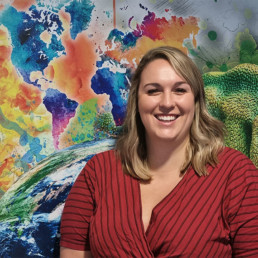
Written by Sophie Tales
Associate Assistant Principal for the Mead Educational Trust in Leicester. Sophie leads on Social, Emotional Mental Health, SEND Support and Development, Transition, Oracy, Team Teach and is chair for SENCo and Family Support Worker Networks.
What does it mean when students with SEMH show prejudice within a state of crisis? How can this be managed? How should this be tackled?
Within an SEMH context there are high staff to student ratios. Therefore, in the best of settings, there is very little behavior that goes unnoticed. This means that as staff you have a very insightful position within the lives of the SEMH students that are in your care and, therefore, have an opportunity to support students within any ounce of behavior that has been shown; positive or negative.
When it comes to times of crisis for students with SEMH, this can manifest in different ways. Behaviour that can be shown as an SEMH student reaches crisis: verbal abuse, physical abuse, controlling behavior, damage of property or self-harm.
Verbal abuse can often be part of an individual student’s behavior when they are in or reaching crisis. When an SEMH student is in crisis they are in ‘Fight, Flight. Freeze.’ Fight and flight are often seen within SEMH contexts. Verbal abuse is part of the ‘Fight’. Typically abuse that I personally get is “fat”, “bitch”, “slag”, “slut”; all very much to do with my body and being female. Within this state of crisis an SEMH student is in such a state of unrest that they are attempting to show you just how badly they are feeling; sometimes they want you to feel just as badly as they do – hence the abuse. What I, as a white woman, haven’t experienced is any abuse about the colour of my skin. However, what I wish to discuss within this piece of writing is that when working with students with SEMH, racist language may well be used as abuse towards anyone; regardless of the colour of their skin.
As with any SEMH context, the behavior policy of that setting is a fundamental part of the running of the school and provides a clear set of rules, as well as opportunities, for students to follow to be rewarded for positive behavior. Racism is a key part of the policy which outlines steps of action if a student shows racial prejudice. However, what I would argue is that all contexts, SEMH or not, alongside their behavior policy, equally need a defined focus within the setting’s curriculum where ‘racism’ is being taught; for SEMH students, especially those who are white, racism is a very hard concept to understand.
The importance of having a differentiated curriculum designed to discuss what race and racism is became increasingly apparent to me when dealing with a group of white students who were increasingly using racist language towards members of staff when they were reaching a state of crisis. It became increasingly apparent that this needed an individual approach as no form of sanction was helping them change their behavior. For instance, these students all hated working away from their main class group and this was the first part of the sanction for the racist words that they had used. In the past, working away from their main class group would help these particular students to understand what they had done wrong and to stop any repeat offenses. However, with this incident, it didn’t. The words these students were using became worse and, strangely, the targets of these racist words became more varied. These students started to use these words towards anyone who was around at their point of crisis. They were not directing these racist words towards any particular skin colour; they were saying them to anyone available – white or black. This change in word direction helped me to see the issue. These students were not showing their prejudice; they were using words that they knew offended and upset people, without having any real understanding of what they were talking about.
This is where I realised I had overlooked something. I had overlooked just how complex a social construct such as racism is for any child, let alone a student with SEMH. To be able to understand racism, you are not just having to teach how historically people of colour have been treated as inferior to white people – you have to help teach the impact of community, culture, religion and, above all else, empathy. This is not an easy endeavor for students who struggle with social understanding. Yet, once this has been identified, you can identify what needs to be broken down for those students to understand the impact of their words and behavior.
For the students I was working with they needed context. They needed to understand what the words they were using meant to the staff they were saying it to. This could not come from me. A white woman telling them how it made another person feel wasn’t enough context; they needed to hear it from the person they had said it to. Secondly, they needed to see what this meant in context. They needed to see the community of people that they were directly offending when using those words. Finally, they needed to be in that community, to see those faces, and to discuss, in front of the community they were offending, when out of crisis, and to feel the weight of the language they had used.
The above approach worked. These students no longer use racist language within a state of crisis; it has been put back into a box that they know is not to be touched; regardless of the level of distress they are feeling. This is not to say that I think they will never use these words in a state of crisis again; they most likely will. But what they have now is a foundation of understanding that can be used to remind them of who they are not to use such language. Most importantly, it helped everyone involved to see that these students were not prejudiced. They were not targeting race; they were seeing a way of hurting someone as a tool for communication, without an understanding of the historical and social weight of the words they were using.

